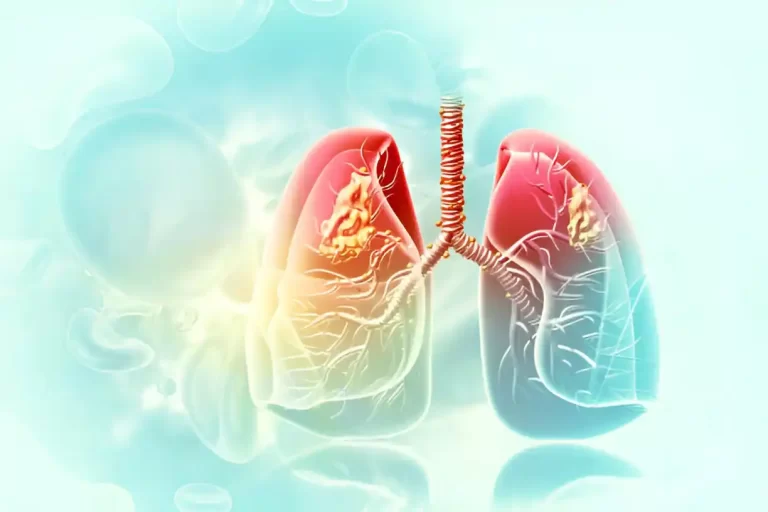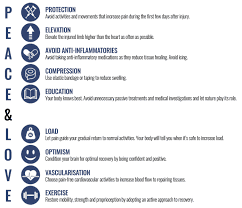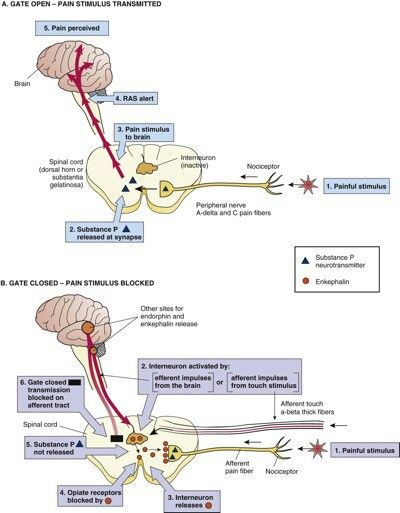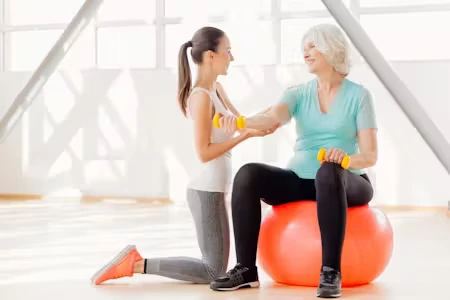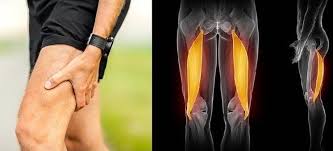Carr And Shepherd Approach
What is the Carr and Shepherd method?
The Carr and Shepherd motor learning approach treats individuals facing neurological challenges. This method is founded on the belief that the brain is flexible and can reorganize and adapt after sustaining brain or spinal cord injuries.
The Carr and Shepherd technique promotes the patient’s active involvement, making therapy functional and focused on tasks to achieve optimal recovery after an injury. For instance, it includes activities such as navigating stairs, entering and exiting the bath, and preparing a cup of tea.
Key Principles
Early Intervention: This method stresses the significance of early intervention to avert disuse atrophy and further complications.
- Active Participation: Patients are encouraged to engage actively in their rehabilitation journey, making choices and practicing relevant tasks.
- Task-Oriented Approach: Rehabilitation targets specific activities pertinent to the individual’s day-to-day life, like walking, dressing, and eating.
- Problem-Solving: Therapists assist patients in recognizing and addressing challenges faced during functional activities, fostering independent problem-solving abilities.
- Practice and Repetition: Regular practice and repetition of functional tasks are essential for acquiring and maintaining skills.
Positive Reinforcement: Support and positive feedback are employed to encourage patients and reinforce successful efforts.
Therapeutic Techniques
The Carr and Shepherd approach includes a variety of therapeutic methods, such as:
- Constraint-induced movement Therapy (CIMT): This technique involves limiting the unaffected limb’s movement to promote usage of the affected limb.
- Mental Practice: Patients imagine themselves carrying out functional tasks to improve motor learning and recovery.
- Biofeedback: This method offers immediate feedback on muscle activity, aiding patients in enhancing motor control.
- Functional Electrical Stimulation (FES): FES employs electrical stimulation to activate muscles, improve muscle performance, and facilitate movement.
Benefits of the Carr and Shepherd Technique
- Improved Functional Independence: The task-oriented method assists patients in regaining functional abilities and independence in everyday activities.
- Enhanced Quality of Life: Better functional capabilities lead to an improved quality of life and greater involvement in social engagements.
- Reduced Dependence on Caregivers: Greater independence minimizes the need for caregiver help, promoting self-sufficiency.
- Faster Recovery: Early intervention and active engagement can expedite recovery and enhance outcomes.
Applications
The Carr and Shepherd method is frequently applied in the rehabilitation of individuals with various neurological disorders, including:
- Stroke
- Spinal cord injury
- Traumatic brain injury
- Multiple sclerosis
- Parkinson’s disease
The Carr and Shepherd approach holds that recovery should begin as soon as feasible following an injury. Prompt treatment aids in preventing non-use of the affected area, muscle weakness, diminished endurance, as well as mental and perceptual decline. Early rehabilitation also stimulates the patient’s learning abilities in motor and cognitive skills.
The principles underlying the Carr and Shepherd technique include:
- Treatment focuses on tasks
- Recognizing the significance of cognitive and perceptual functions alongside motor abilities
- Incorporating the affected side in movements
- Utilizing verbal and visual prompts to encourage patient reflection on tasks and learning from therapy
- Discouraging compensatory movements
- Preventing muscle shortening, which can lead to spasticity and atypical movements.
- Promoting active patient participation—performing exercises between treatment sessions and keeping track of their practice.
- Delivering treatment that is context-specific within an engaging, functional environment centered on daily tasks.
Benefits of Carr and Shepherd
- The Carr and Shepherd approach holds that patients can learn more effectively in familiar, meaningful everyday situations. Such environments facilitate the retrieval of previously stored functions.
- Increasing muscle strength
- Stretching tight muscles and averting soft tissue contractures
- Enhancing cognitive abilities
- Regaining motor control
- Relearning how to use the affected side
- Improving performance of functional tasks such as transitioning from sitting to standing, walking, reaching, and grasping
- Enhancing the sequence of functional activities to accomplish a specific objective.
- Improving posture
- Increasing independence
The Carr and Shepherd approach emphasizes the need for verbal and visual cues, instructions, and explanations to help patients digest information. These cognitive strategies also contribute to re-establishing previously stored functions.
How is it implemented, Carr and Shepherd?
Specialized neurological physiotherapists regularly employ the Carr and Shepherd method in the rehabilitation of patients with various neurological disorders.
This method is utilized alongside various other treatment types tailored to the person, their symptoms, and their objectives. This allows the physiotherapists at Physio.co.uk to maximize the potential of each patient we help. Physiotherapy using the Carr and Shepherd technique will increase independence in everyday activities and improve quality of life.
The Carr and Shepherd treatment is currently applied to manage numerous neurological conditions, including:
- Cerebral Palsy
- Head Injury
- Parkinson’s Disease
- Stroke
- Spinal Cord Injury
Carr and Shepherd’s physiotherapy aims to boost both motor and cognitive abilities by actively engaging the patient through functional movements in an environment that holds significance for them. This strategy will make everyday tasks considerably simpler and foster greater independence.
Procedure for Motor Relearning Program
Carr and Shepherd:
MOTOR RELEARNING PROGRAM:
Developed by Australian physiotherapists, Janet Carr and Roberta Shepherd, this strategy is oriented towards tasks and concentrates on re-acquiring everyday routines to enhance motor control. It draws significantly from kinesiology concepts that emphasize a dispersed model of motor control rather than a hierarchical approach.
THEORETICAL UNDERPINNINGS OF MRP
Postural adjustments are proactive and continuous. The context or regulatory conditions present in the environment (the interactions between the performer and the surroundings) are what facilitate the evolution of motor behaviors. The main issue following a stroke is the inability to generate suitable action models, rather than spasticity or pathological movement strategies.
OBSTACLES TO EFFICIENT MOVEMENT: MOVE ATTEMPT
Reduced soft tissue flexibility.
Impaired balance.
Postural insecurity leads to fixation patterns.
Specific muscle weakness leads to compensatory movement strategies, which results in repeated practice of the compensatory method, thus reinforcing the learned compensatory strategy.
BASIC DESCRIPTION AND GUIDELINES
The program consists of guidelines for assessing and enhancing seven daily functions:
- Upper limb function
- Oro-facial function
- Transitioning from supine to sitting
- Sitting
- Transitioning from standing to sitting and back
- Standing
- Walking
BASIC DESCRIPTION AND GUIDELINES
Each segment includes a description of the typical activity, highlighting the main elements of movement. It is not necessary to master one area before progressing to the next. There is no predetermined sequence for the sessions, and the order of the segments is flexible. Patients should be allowed to make mistakes and must remain actively engaged in the activity (without resistance).
Intervention: FOUR STEPS OF THE MRP
- STEP 1: ANALYSIS OF TASK
- STEP 2: PRACTICE OF MISSING COMPONENTS
- STEP 3: PRACTICE OF TASKS
- STEP 4: TRANSFERENCE OF LEARNING
Step 1: ANALYSIS OF TASK
Observing the patient as they perform (or plan to perform) the activity is essential. NOTE THE FOLLOWING:
- Any missing components
- Inaccurate timing of movement pattern components
- Insufficient muscle activity
- Irrational or excessive muscular activation.
- Compensatory motor behavior
• Comparison
• Analysis
Steps 2 and 3: Practice Identifying Missing Tasks and Components.
Practicing at peak performance for a minimum of 30–60 minutes or more, or twice a day. Steps 2 and 3 overlap, with Step 3 focusing primarily on the transition from the cognitive to automatic stages of learning.
Important Considerations for Missing Components and Tasks During Practice
Motor tasks can either be practiced in their entirety or divided into components. The complete activity is then practiced following the practice of each component.
- Techniques predominantly include:
- Verbal and visual feedback (explanation and demonstration)
Instructions should be brief and clear.
Passive movement during a demonstration should not exceed one or two repetitions.
Manual guidance involves physical restrictions (passive or geographical and temporal constraints).
- Consistent monitoring of body alignment is essential.
IMPORTANT DECISIONS FOR MISSING THE COMPONENTS AND TASKS IN PRACTICE
Methods of progression
Acceptable progression techniques:
- Reduced manual direction and input
- Altered speed
- Increased variety/complexity
Inappropriate progression methods include:
- Following a neurodevelopmental sequence for motor skills
- Transitioning from passive ROM exercises to resistive workouts
- Moving from parallel bars to quad cane
- Transitioning from a broad to a narrow base of support
- Rolling over before achieving seated balance.
Step 4: TRANSFERENCE OF LEARNING
Possibility of contextual practice
Ensuring consistent practice and encouraging feedback
Scheduling self-monitored practice
Creating a structured and stimulating learning environment
EQUIPMENT
Items that can be utilized as the job’s regular functioning regulatory conditions
Unrequired equipment:
- Parallel bars
- Splints or braces that maintain ankle dorsiflexion
EFFECTIVENESS
The effectiveness is determined by the therapist’s expertise in motor control, biomechanics, and problem-solving ability.
Carr and Shepherd’s book in summary
The updated edition of Neurological Rehabilitation: Optimizing Motor Performance presents a practical and task-focused method for rehabilitating individuals with neurological issues, highlighting the importance of client engagement and detailing exercises and training designed to challenge them and assist in regaining the necessary strength and endurance for independent living.
In this new edition, Janet Carr and Roberta Shepherd have incorporated recent scientific findings as well as contributions from colleagues with expertise in research and clinical practices in this field. Neurological Rehabilitation stands out by addressing the necessity to broaden rehabilitation options to enhance practice opportunities, incorporating semi-supervised groups and circuit training alongside traditional one-on-one interventions.
The book is organized into three sections. The first three chapters lay the groundwork for comprehending the significance of neuro-rehabilitation in the recovery process. Chapter 1 explores brain plasticity and the importance of practice and challenge in facilitating brain reorganization; Chapter 2 expands on this by examining task-specific practice, motor learning principles, and how these principles are applied in neuro-rehabilitation. Chapter 3 gives an overview of common measurement tools utilized in neuro-rehabilitation.
Part 2 dedicates a chapter to each of the essential actions necessary for independent living: rising from and sitting down, walking, reaching and manipulating, and maintaining balance. Each chapter details the specific action and the biomechanical aspects, the motor dysfunction resulting from neurological injury, and effective training methods, emphasizing repetitive task-specific training, functional strength training for task-related muscles, and skill maximization through practice and diversity. The training information is relevant for patient care; however, it is more focused on clients who can act, with less guidance for those who cannot or who need to address different tasks, like getting out of bed.
Part 3 examines lesions affecting the motor and sensory-perceptual systems, featuring comprehensive chapters on stroke, traumatic brain injury, Parkinson’s disease, and multiple sclerosis. Each chapter covers the lesion or condition’s pathology, associated clinical features, training, and targeted assessments. The suggested management routinely includes particular exercises along with task-specific and aerobic training.
Throughout the text, Carr and Shepherd also share insights on supplementary rehabilitation methods, such as mental practice, orthoses, electrostimulation, and computerized aids, discussing the evidence-based advantages of integrating these methods into management strategies. Illustrations of exercises, clients, and clinicians engaging with clients enhance the text and prove useful for clinical application.
Neurological Rehabilitation: Optimizing Motor Performance is an outstanding resource for a practical, task-centric approach to neuro-rehabilitation, and I would endorse it as one of the essential references for practitioners working with individuals afflicted with neurological conditions. Nonetheless, additional resources may prove beneficial since this volume primarily emphasizes a task-oriented approach while providing minimal information or evidence on alternative methodologies.
Given its rehabilitation focus, Neurological Rehabilitation will be most advantageous to physical therapy students, recent graduates, and seasoned practitioners involved in neuro-rehabilitation, though other healthcare professionals and physical therapists in diverse fields may also find the comprehensive information it offers on neurological injuries and recovery useful.
In summary, Neurological Rehabilitation effectively balances evidence with clinical practice, establishes a foundation for neuro-rehabilitation knowledge, introduces strategies for fostering motor learning and plasticity, and encourages readers to reconsider therapy delivery methods to enhance learning and recovery.
Summary
The Carr and Shepherd technique is an effective approach to neurological rehabilitation that focuses on active engagement, task-oriented activities, and problem-solving. 1 By focusing on functional goals and offering a systematic rehabilitation program, this strategy has the potential to greatly enhance the quality of life for those with neurological impairments.
It increases functional capacity by focusing treatment on specific tasks and promoting active participation throughout rehabilitation. Carr and Shepherd physiotherapy will assist you in relearning movement and daily chores such as climbing stairs, entering and exiting the bath, and making tea.
FAQs
What is the Carr and Shepherd method?
Carr And Shepherd – Neurological Rehabilitation – Treatment Options…
Carr and Shepherd’s physiotherapy improves motor and cognitive function by actively engaging the patient in functional movements in an environment that is meaningful to them. As a result, this technique will greatly simplify daily duties and promote independence.
Differentiate Bobath VS Carr and Shepherd:
Bobath physiotherapy will restore tone and assist you in regaining motor control by making movements easier to do. Carr and Shepherd’s technique enhances functional ability by focusing treatment on specific tasks and promoting active participation throughout rehabilitation.
What are the techniques for inhibition of spasticity?
Slow rocking, slow anterior-posterior movement, slow horizontal movement, slow vertical movement, and slow linear movement all contribute to complete body inhibition.
What is the Carr model?
C.A.R.R. Technique (Context, Action, Result, Reflection) The C.A.R.R. approach is an excellent strategy for dealing with competency-based inquiries during interviews. The technique enables interviewers to arrange their responses.
What is the Shepard method?
(Inverse Distance Weighted Interpolation) The interpolated value is the mean of values weighted by inverse distance; this is an example of Shepard’s approach, which can be extended to employ a nearest-neighbor search for improved performance.
What are the principles of a motor relearning program?
The Motor Relearning Programme’s major concepts include task-oriented practice, active engagement, repetition, feedback, specificity, and training intensity, all of which are designed to promote motor recovery and functional improvement.
References
- Carr And Shepherd – Neurological Rehabilitation – Treatments – Physio.co.uk. (n.d.).
- https://www.physio.co.uk/treatments/neurological-rehabilitation/carr-and-shepherd.php
- Carr and Shepherd’s approach – Motor Relearning Program. Samarpan
- Physiotherapy Clinic. https://samarpanphysioclinic.com/carr-and-shepherds-approach/
- Physiotherapy for Complex Needs, Neurological Physiotherapy is a physiotherapy and rehabilitation information and referral centre for people with neurological illnesses. (n.d.). Neurological
- Physio. https://neurologicalphysiotherapy.com/neurological-physiotherapy/neurological-physiotherapy-principles/
- Neurological Rehabilitation: Optimizing Motor Performance. Physiotherapy Canada. Physiothérapie Canada, 67(2), 215–216. https://doi.org/10.3138/ptc.67.2.rev2



